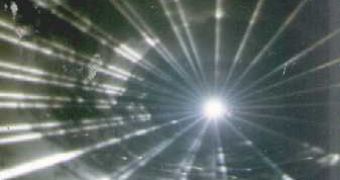In a recent book, physicist Joao Magueijo explains the principles of his varying-speed-of-light (VSL) theory, claiming that light can outrun itself. This idea of velocities beyond that of light has been discussed before, as two German scientists claim their quantum tunneling experiments proved it was possible.
Light is a physics constant and its speed is 300.000 (about 186.000 miles) km per second. In his theory of relativity, Einstein claimed this was the maximal speed limit in the entire universe and that nothing, regardless of circumstances, can exceed it. An infinite quantity of energy would be required in order to do so. Dr. Gunter Nimtz and Dr. Alfons Stahlhofen, both from the University of Koblenz in Germany, don't agree, though.
Their tests were based on the phenomenon of quantum tunneling, which refers to sub-atomic particles that, under certain circumstances, defy the laws of physics. They propelled photons beyond the speed of light; in fact, so much beyond that they couldn't even manage to measure it. They used two similar glass prisms in order to make a cube 40 cm on each side and propelled microwaves 33 cm in wavelength through it. During the process, they separated the prisms. As expected, the first one reflected the microwaves but a few photons managed to tunnel through the gap into the second prism. Both the reflected and the tunneled photons reached their photodetectors at the exact same time, which indicates a super-fast, unmeasurable transit between the prisms.
Dr. Joao Magueijo's version is only theoretical so far. The 40-year old Princeton and Cambridge ex-student described in his book the way he thinks light evolved. He believes the speed of light is not constant, but variable and dependent on energy or on time and space. Also, according to him, light had traveled much faster (as in 60 orders of magnitude faster) than it does now. This could change the foundations of physics finally believed to have been laid in place by Einstein. Even more, this could help experts discover the grand unified theory that Einstein struggled to find. It could even explain or change concepts related to things like black holes, string theories, space travel or time dilation along the way.
The final aim is similar to that of grand devices like CERN's LHC or Fermilab's MicroBooNE – to better understand the universe, the way it formed (the Big Bang and the immediate events), how it works and how it will evolve further on. And, like the rest of the attempts, Magueijo's theory will only be proven right or wrong in time.

 14 DAY TRIAL //
14 DAY TRIAL //